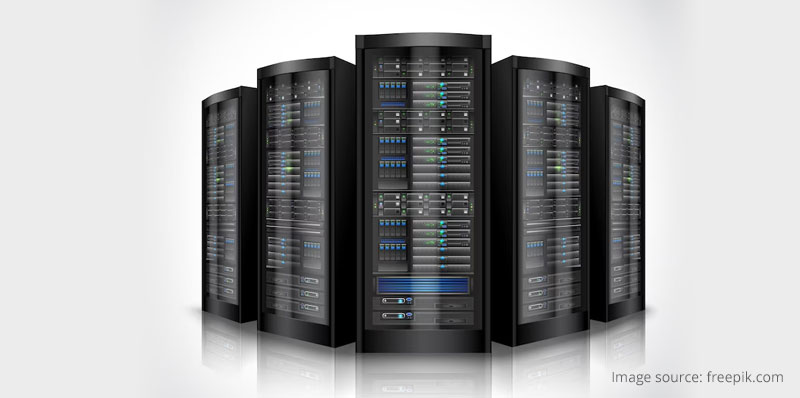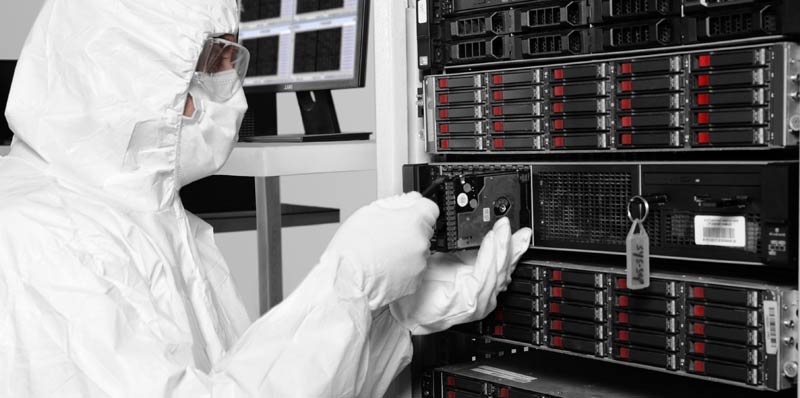A Redundant Array of Independent Disks (RAID) is an advanced virtual data storage technology that consists of two or more hard drives in a single unit. It is highly popular for offering better performance, data security due to redundancy, and cost-effectiveness. And, if you’re considering Raid for your server, it’d be one of the best decisions you ever made. Why? There are various reasons to invest in RAID to boost server performance and reliability along with various other benefits. Let’s understand them in detail.
Why do you need RAID for your server?
Using RAID helps you improve server redundancy, better performance, and protection against data loss by offering fault tolerance. Storage capacity is another factor that makes RAID an ideal solution for servers. If uptime and online availability are necessary for your business operations, you must implement RAID in servers.
Without RAID installed in your server, your business will certainly suffer downtime. For example: if there is a normal hard drive used in the server, it may fail anytime and your server will be down for at least a few hours while you restore it. Although it may be during heavy traffic, it will cost you money and customers while you restore the drive and server backup.
Different Types of RAID Arrays

There are different RAID array types available. However, the most popular RAID arrays are explained below:
RAID Array 0
RAID 0 is based on a Striping mechanism, meaning the data is divided into blocks and spreads across multiple hard drives or SSDs in the array. Since data is spread across multiple disks, every disk can access the contents of a file, allowing quicker read and write functions.
RAID Array 1
This RAID array 1 follows the Mirroring mechanism, meaning the data is stored and replicated on the disks. The data available on one disk is exactly replicated to another disk in the setup. Therefore, RAID 1 can sustain one drive’s failure.
RAID 5
RAID 5 is based on the Parity mechanism. It requires at least three drives setup. The data is split across two disks and then the third disk contains all the data from both devices, hence, called the Parity disk. All the disks in the array become a Parity disk at a time since data keeps spreading on all the disks and one disk keeps collecting data from both other disks. Thus, it can withstand up to two drive failures.
RAID 6 and Raid 10
RAID 6 follows block-level striping and offers double-distributed parity. There should be a minimum of four drives. While RAID 10 also needs four drives, it combines RAID 1 and RAID 0 (Mirroring and Striping) technology. RAID 6 can afford two drives’ failure, but RAID 10 can let you recover data even if the one drive in each mirrored pair is working.
Which is the Best Raid for Server – Types & Benefits

Since there are different types of RAID arrays available, deciding the best RAID configuration for servers could be a little bit tricky as each RAID array offers a different level of data redundancy, performance, and other advantages.
RAID 0 – This one is a good option if the optimum server performance is required. The data read/write function is done quickly across multiple disks, thereby offering improved performance. However, the downside of choosing this drive is you get no fault tolerance. If one drive fails, your data may lose or corrupted.
RAID 1 – Choosing RAID 1 for your server would be good if you want to acquire a budget-friendly data redundancy and speedy data read function. It is also relatively less expensive. However, the downside is that with Software RAID 1 configuration, the data can be mirrored between different volumes of single disks.
RAID 5/6 – Both RAID arrays are good when you have web servers and need extremely large storage arrays and high read environments arrays as a single object. Both RAID arrays offer Parity and can withstand two drives’ failure. They are a great option for fault tolerance. However, the downside is the slow data-writing process. It will take time to write down all the drives and build Parity.
RAID 10 – This RAID level is great for highly utilized database servers or any other server, performing many write operations. Since it follows both Mirroring and Striping technologies, it offers great performance. However, it’s quite costly as it needs at least four disks.
Data Recovery from RAID Arrays
Each RAID array offers a different set of benefits. We’ve discussed how different RAID arrays can be good for your server instead of a single hard drive. However, one assurance we all need is that our data stays protected. Although RAID levels offer high fault tolerance, like a single hard drive, they may also fail. However, the good news is that RAID recovery is possible.
You can rely on dedicated RAID data recovery software, such as Stellar Data Recovery Technician. It is a DIY software that works on Windows and Mac systems. It recovers data from RAID 0, 1, 5, 6, and Nested RAID drives. You can recover data from inaccessible, formatted, or broken RAID arrays and volumes. It performs RAID construction virtually to allow data recovery from logically damaged RAID.
RAID Redundancy – Not a Substitute of Backup at All
Do keep in mind that RAID may offer multiple benefits, but don’t take it as a substitute for backup. It also doesn’t replace your backup strategy. Similar to other hard drives, backing up RAID should also be a part of your to-do list. RAID can be a great option to optimize NAS and your server performance and to ensure quick data recovery in case of hardware failure. However, it certainly is not the solution for disaster recovery.
FAQ
1. Which RAID is most used in network servers?
RAID 5 is one of the most used RAID configurations by business servers and enterprise NAS devices. It offers improved performance compared to RAID 1 and RAID 0 with high fault tolerance, given the Parity mechanism.
2. Which RAID is safest?
RAID 1+0 or RAID 10 is the safest choice of all. It follows the Mirroring and Striping mechanism, thus offering great redundancy. However, it has less storage capacity from the same disks and is a bit more costly.
3. Which RAID is the fastest?
RAID 0 is considered the fastest RAID array as it is based on a Striping mechanism. The data is split across different disk blocks, thereby, offering quick read/write speed and maximum availability of raw storage capacity. But RAID 0 offers no redundancy.
4. How to Choose the Right Level for Your RAID System?
Multiple factors are considered while choosing the right level for your RAID system, such as:
- Capacity needs
- Application performance needs
- Fault tolerance
- Data recovery and more
Was this article helpful?